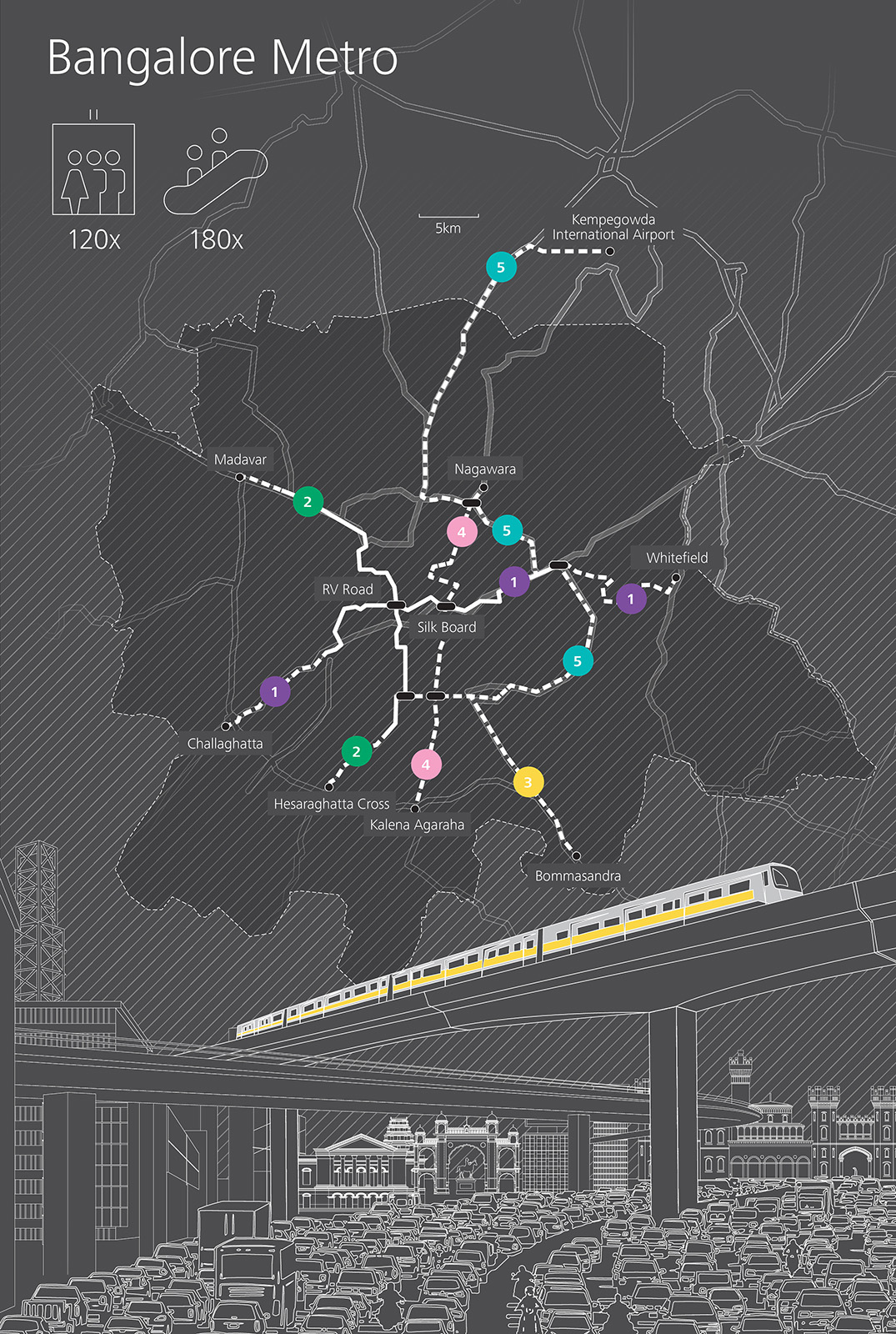Bengaluru, India
Change-makers
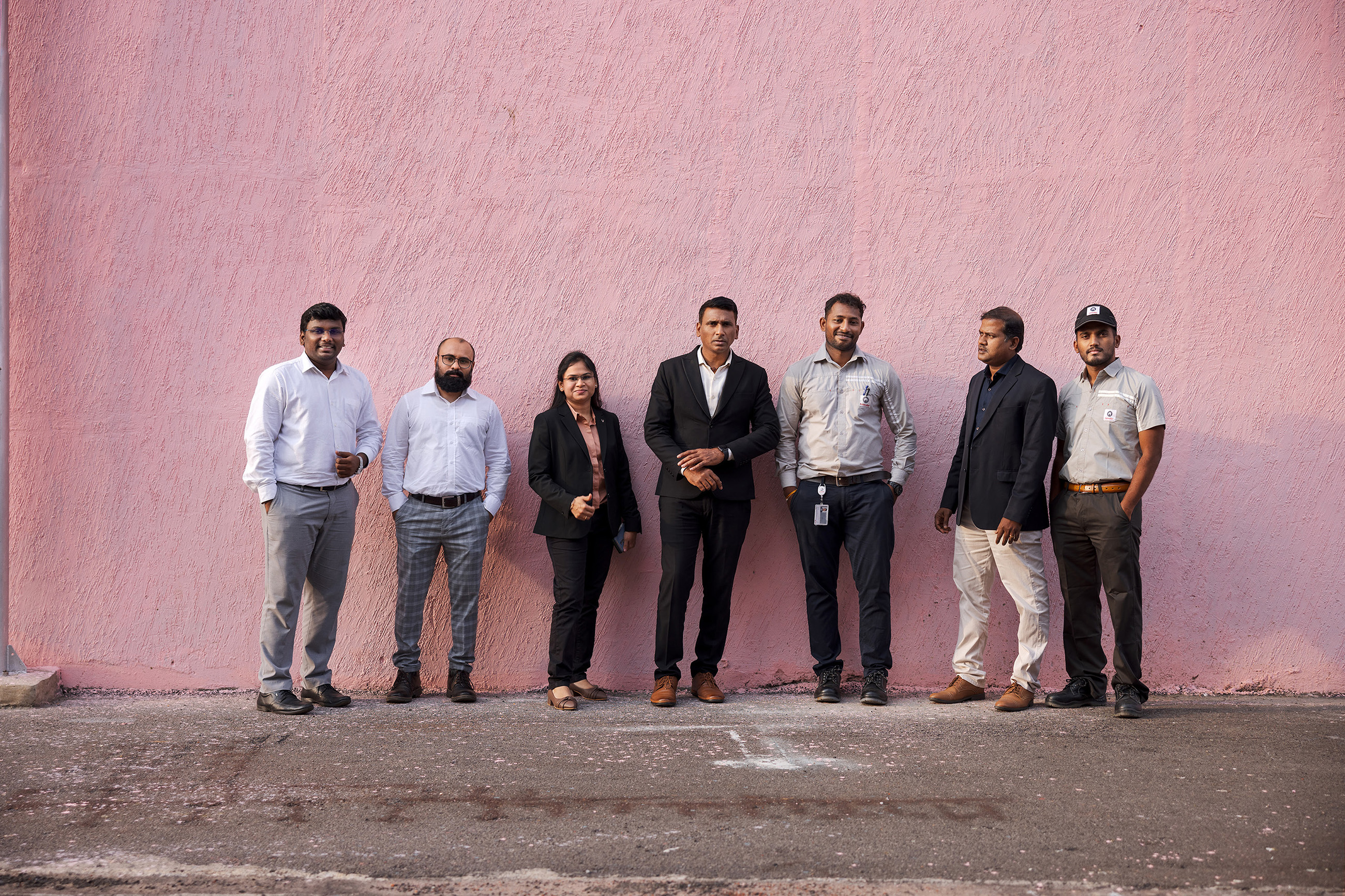
Expanding the metro in Bengaluru will bring its millions of inhabitants new options to get around the city and avoid the ever-congested roads. Schindler elevators and escalators provide access to trains.
Vehicles are backed up in four or five lanes, along Service Road in Bengaluru. Here, drivers are skilled in exploiting every millimeter. Motorbikes and mopeds pass within a whisker of the cars as they inch forward, accompanied by the sound of horns.
Over the last 20 years, India’s third-largest city, IT metropolis, and back office for many of the world’s major corporations has more than doubled in population size, from 5.5 million to 11.5 million residents. Each week, between 1.5 and 2 million car drivers are on the road in Bengaluru, including approximately 100 000 IT workers who commute around the clock to offer their services to people all over the world. The numerous parks and lakes, which explain why Bengaluru is known as the Garden City, are incompatible with such high traffic volume, and roadway infrastructure has been unable to keep pace with the city’s population development.
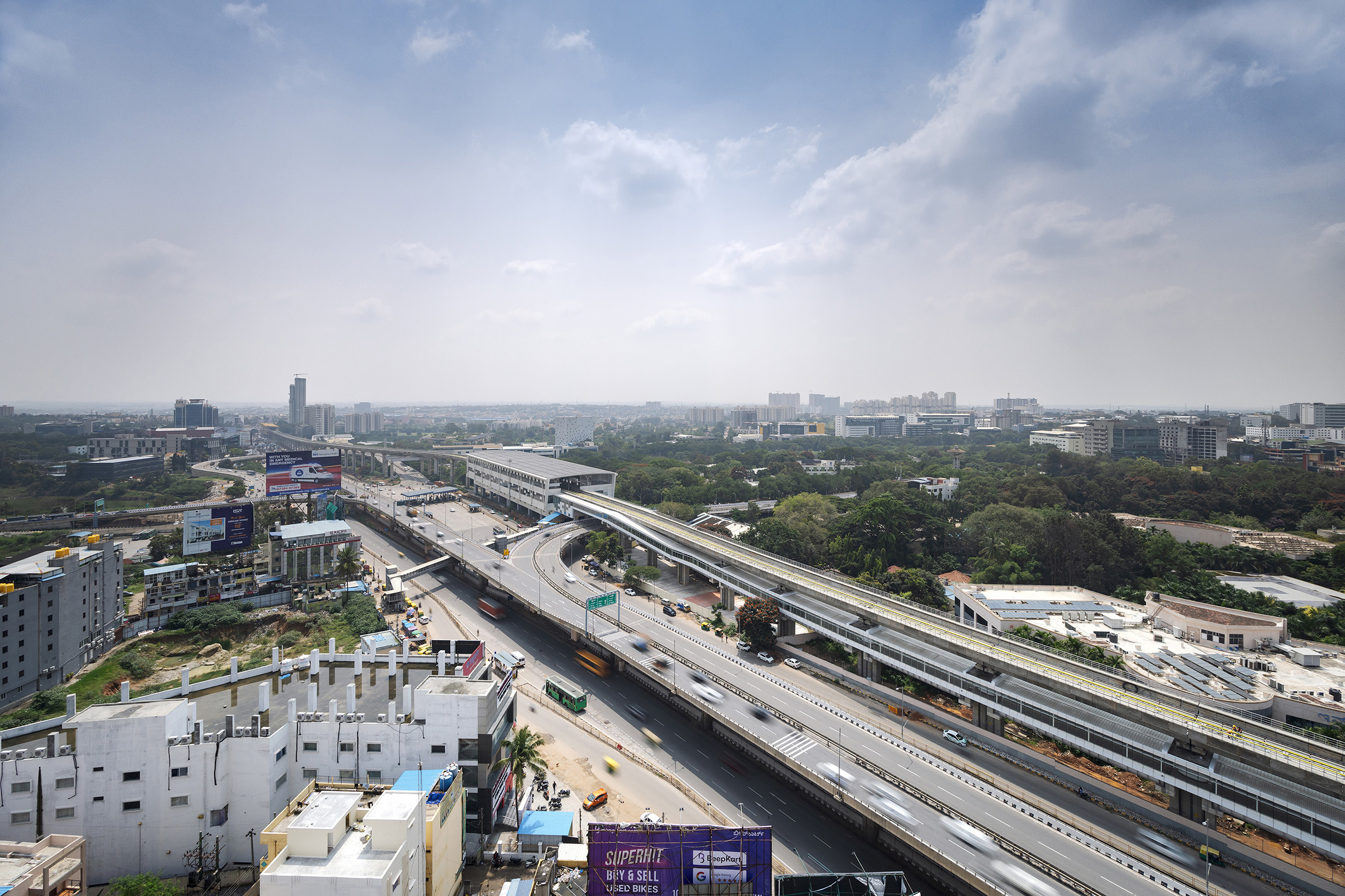
The solution to all this traffic congestion is currently being constructed 20 meters above street level. The Konappana Agrahara metro station on the Yellow Line near the Electronic City IT hub will be inaugurated in spring 2024. In Bengaluru, yellow is the color of hope: the new line is expanding the Namma Metro by another 20 kilometers and 16 stations, heralding a new age.
The trains of Bengaluru first traversed the city in 2011. Until now, the city has had only two metro routes, the Purple Line and the Green Line, which have been gradually extended over the years by the Namma Metro. Today, 700 000 residents commute via 73 kilometers of track, reaching their destinations quickly and affordably.
By 2026, the Bengaluru metro network will span 170 kilometers. It will link the IT hubs with the airport and the traffic-choked Outer Ring Road, providing some much-needed relief to the city’s streets. In the language of the Indian state of Karnataka, of which Bengaluru is the capital city, “Namma Metro” means “Our Subway.” A. S. Shankar, Executive Director of Namma Metro, says, “We estimate that we can attract between 25% and 50% of all commuters to switch from cars to the metro. It’s harder to predict what the motorbike and moped riders will do, everything depends on how close their homes and workplaces are to a metro station. The last mile is crucial to changing their behavior.”
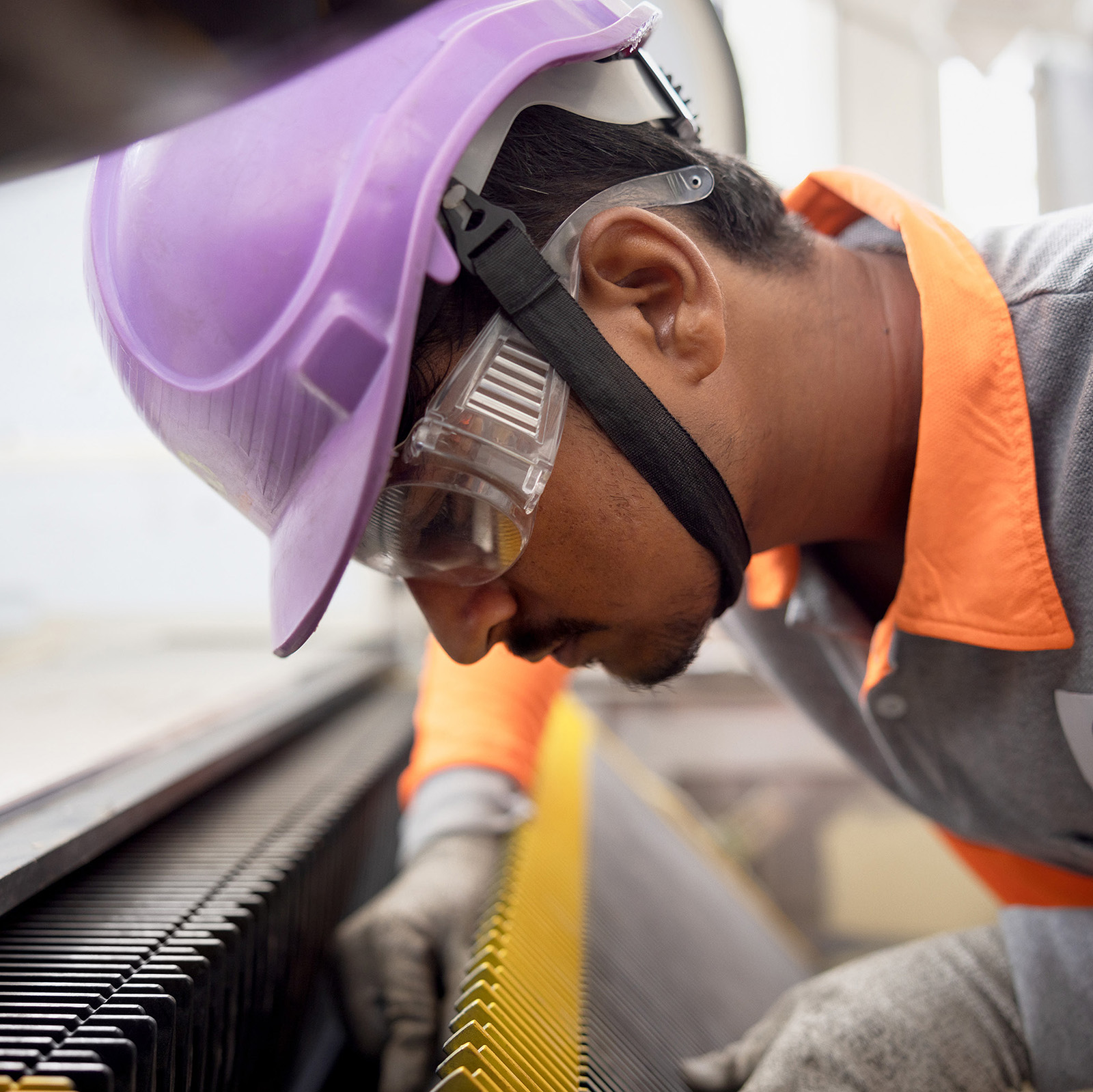
Schindler India plays a critical role in the metro project. There was not enough space for a ground-level network and insufficient funding for a completely underground subway. As a result, some 90% of metro traffic runs on elevated lines, with just 10% underground. Only seven of the city’s 69 stations are below ground. All this means that commuters need to be brought up or down to the metro tracks – calling for highly reliable escalators and elevators. In the first phase, Schindler installed 120 elevators. In the second, Namma Metro awarded the company the contract for 180 escalators. The Schindler 9700 escalators, designed to accommodate high traffic volume, are produced in Schindler’s own factory in Pune – a fact of great significance to the Indian government. Schindler’s work ethic – with safety, reliability, and punctuality as key values – also weighed on the decision to grant it the contract, according to A. S. Shankar.
Schindler installers recently put the finishing touches to the escalators in the empty passageways of Konappana Agrahara metro station. In this station alone, New Installation Area Manager Nageswaran Nagarajan and his team installed 16 escalators. Their greatest challenge was the delivery of the vast number of parts, which involved battling the never-ending traffic flow along Service Road and the Chennai Highway, both of which run parallel to the metro line. “I’m extremely proud that we accomplished this smoothly and with the precision for which Schindler is known,” Nageswaran Nagarajan says. “In the end, the customer expects no less from us.”
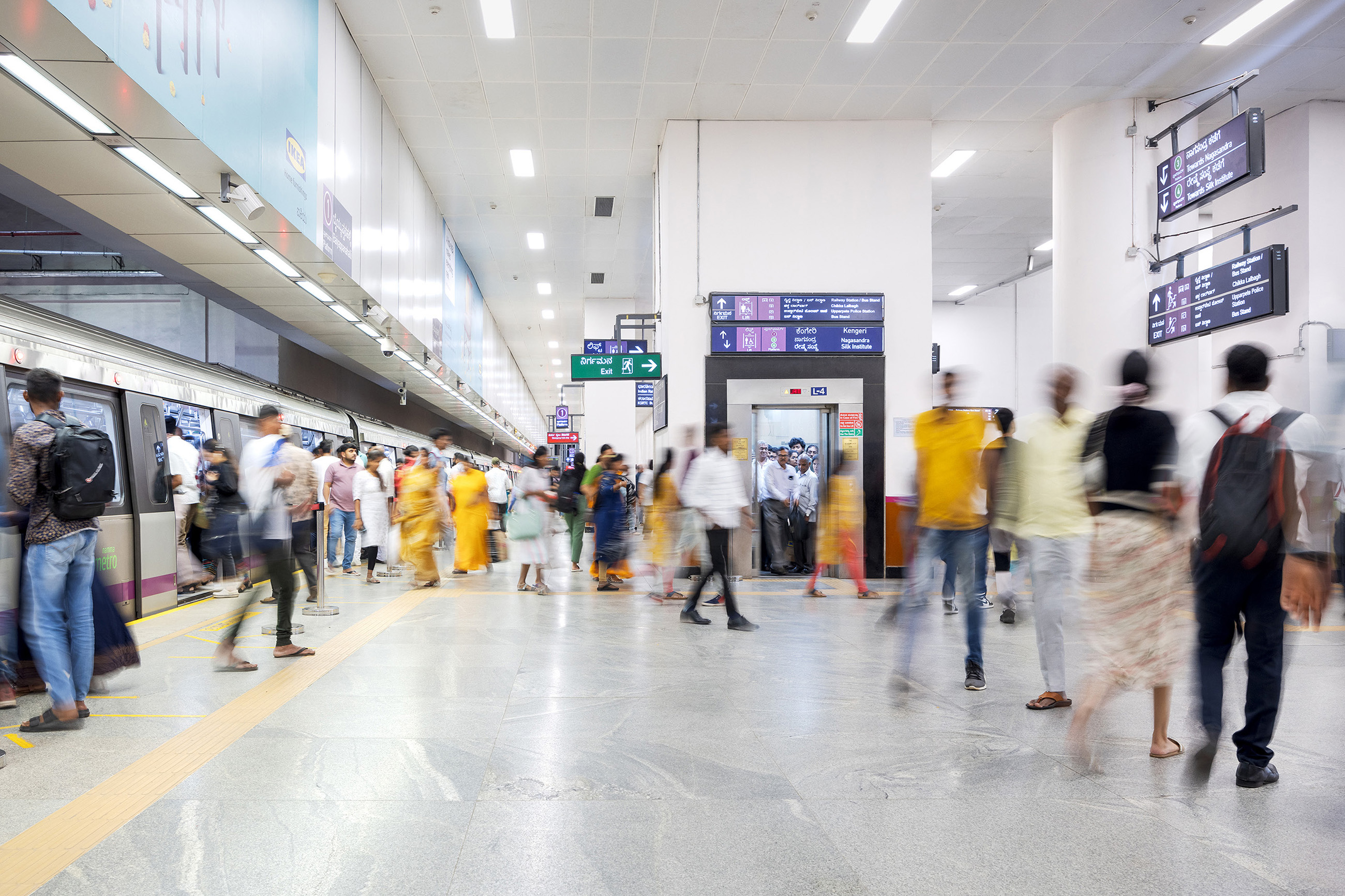
There is great pent-up demand in India for elevators and escalators. While in Switzerland there are 32 elevators per 1 000 residents, in India there is just 0.5. It is estimated that the population will grow by a further 160 million people by 2035, creating a need for another 35 million homes and buildings, in turn fueling demand for an additional 1 800 000 escalators and elevators. Schindler India, which is celebrating this year its 25-year anniversary, remains on a growth trajectory.
Tanmaya Singh, Vice President Field Operations, recognizes the importance of the city’s metro to Schindler. “The metro contract is very important for us,” he explains. “With our products, we shape regional public transit in a challenging environment. Customers are impressed by our maintenance solutions, such as digital remote monitoring, and by our reliability.”
Across India, Schindler is training 300 apprentices per year, but the greatest potential has not yet been tapped: women. Theresa Antony, an adviser at Schindler Bengaluru, explains: “Several women are now in leadership positions at Schindler India. It’s a secure, open, and accepting environment with equal pay.”
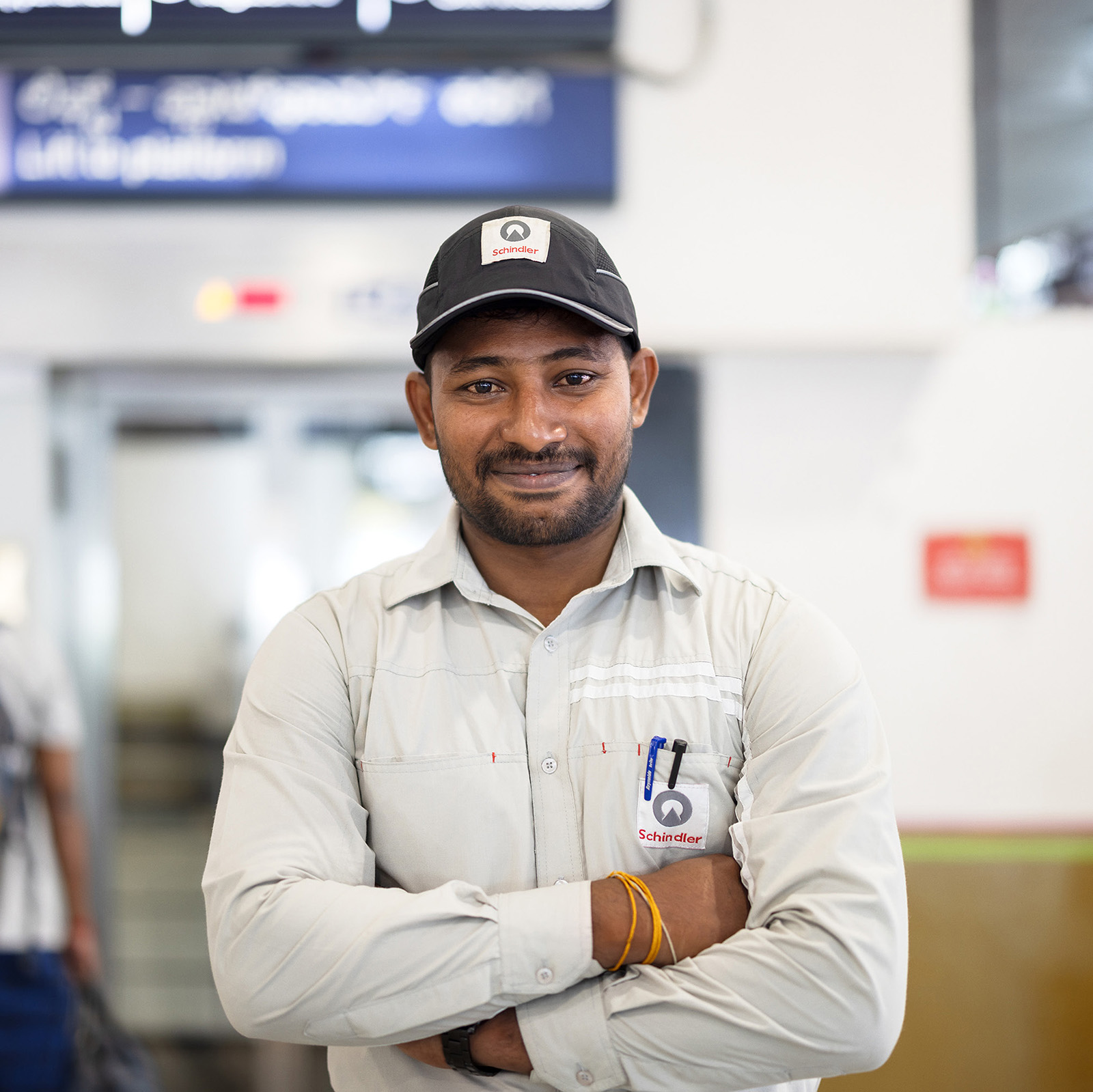
Since 2016, Schindler elevators have shown robustness and reliability in the face of heavy daily use. Majestic station is the metro interchange for the Purple and Green Lines, the network’s north-south and east-west axis. With four levels and a surface area of 48 000 square meters, Majestic is Asia’s largest subway station. Some 20 000 commuters board and disembark here. Schindler service technicians work round the clock to ensure that the four Schindler 5400 elevators remain in service, moving approximately 9 000 passengers a day from one level to another. EI team leader Arunkumar Haridas is happy to play a small part in keeping things moving smoothly. “I help people make their way through Bengaluru. It gives me purpose and joy.”
He has personally implemented a response time of between five and ten minutes to resolve disruptions and avoid chain reactions. Connected escalators and elevators means imminent problems can be resolved before users even become aware of them. Technicians perform system maintenance work between 11 p.m. and 5 a.m., hours when no trains are running.
Sethuram Gudimitila, Assistant General Manager Branch 2, is proud of the work carried out by his team. “Technical specifications, price, quality – all this is extremely important to us,” he says. “We are very proud to deliver our products. Recently, when my brother was about to step on the Schindler logo at the base of an escalator, my father stopped him, saying ‘We don’t do that!’”
